Growing and Learning with the Teacher Institute
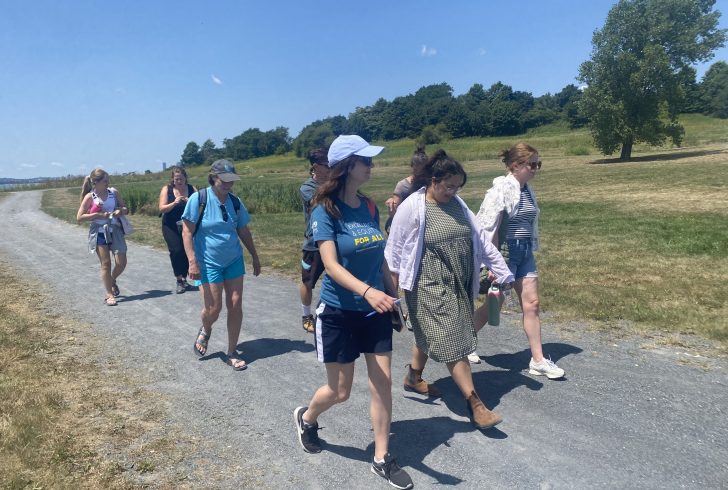

by Daria Healey
Summer Institute Fellow
Three weeks ago, we held our third annual Stone Living Lab (SLL) Teacher Institute – a free five-day course bringing teachers, educators, and researchers together to engage in hands-on activities and discussions about climate change, place-based learning, and participatory science* in the local context of Boston Harbor.
This year’s cohort welcomed 11 teachers from across the Greater Boston area, educating students from Grades K-12 in a variety of scientific disciplines. The program was co-facilitated and developed by Elisabeth Colby and Cathy Radonic (National Park Service), Holly Rosa (Boston Public Schools), and Rebecca Shoer and Daria Healey (SLL). Throughout the week, the teachers applied what they learned from a mix of classroom and field-based experiences to develop a final capstone project. In this project, the teachers develop place-based lesson plans related to climate change or environmental issues, with the goal of implementing the plans in the classroom during the upcoming academic year. Each lesson plan had to identify and incorporate three key elements of place-based planning: partner, protocol, and place.
We were thrilled to welcome our new cohort of participants for the program’s third year. Follow along below to see what we did each day!
For our first day of the Institute, we gathered at the Commandant’s House in the Charlestown Navy Yard. Built in 1805, the Commandant’s House originally served as a private home and entertainment venue for high-ranking naval officers. Today, the historic residence is used as a meeting space within Boston National Historical Park, where guests are able to step back in time and reflect upon the many ways in which we have engaged with Boston Harbor across history.
We started the morning with an introduction to the syllabus and the six pillars of place-based learning. The six pillars set a standard for learning objectives that are: rigorous, real, empowering, collaborative, integrated, and grounded in place. We referred back to these pillars throughout the course of the week.
In the afternoon, we moved outdoors to hold our Protocol Carousel. The Carousel is an opportunity for teachers to engage directly with educators and researchers from the Boston area who are incorporating participatory science protocols in their own work. This year, we welcomed members of seven guest organizations, including the Harvard Forest, the Nature Conservancy, the Mystic River Watershed Association, the Blue Hills Observatory and Science Center, Boston University, the Climate Conservation Corps, and the National Parks Service.
Each organization highlighted at least one participatory-based protocol within their work, and the teachers were able to rotate through each of their tables to discuss possible applications within their lesson plans. Our guests covered a wide variety of protocols, from water quality testing to biodiversity monitoring to coastal erosion – and many more in between! We concluded our first day with a reflection, where we discussed the opportunities and challenges of bringing students into the field and received insight from our guests.
On Tuesday, we opened the morning with a session on Climate Resources in the Classroom, where we welcomed three guest educators who are already working to implement participatory science protocols within Boston-area school systems.
Deborah Baird, alumna of the Institute’s 2022 cohort, discussed a 7th Grade lesson plan for projecting future sea level rise at Quincy Public Schools. She also introduced us to Daybreak, a cooperative board game challenging players to develop strategies for stopping climate change!
Brittany Hoffnagle, a Climate Resiliency Specialist with the Woods Hole Group, discussed a collaboration with Sandwich Public Schools where they created a Climate Change and Coastal Resiliency Curriculum Framework for 7th and 8th Grade students.
I also had the opportunity to present some of my own research from Northeastern University, where we surveyed undergraduate students to assess their understanding of human-nature relationships and the perceived role of humans within the environment.
After the presentations, the teachers had an opportunity to explore the resources used by our guest speakers, as well as those from our Participatory Carousel participants, to start building out the Protocol component of their capstone projects.
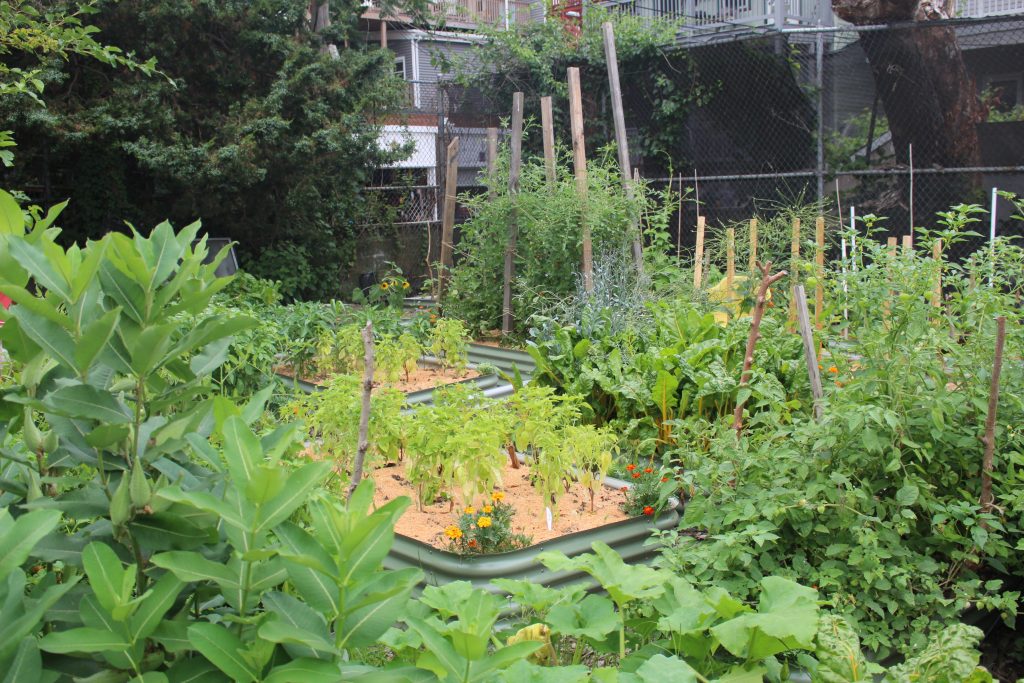
In the afternoon, we held our first site visit at Eastie Farm in East Boston! Here we met with Freight Farm Manager Jas Schatz and Greenhouse Manager Will Hardesty-Dyck to discuss the history of the farm as a community-based non-profit organization and their role in facilitating climate justice, food security, and community resilience through urban agriculture and education. We were then given a tour of the property, which included a geothermal greenhouse, converted cargo containers used for seedling growth, compost, and an urban outdoor garden!
On Wednesday we kicked off our morning at Coughlin Park in Winthrop, MA. We were met by graduate students from UMass Boston, including Kali Roberts, Melba Torres Sosa, and Daniel Lopez, who often work in partnership with the Stone Living Lab for intertidal research and monitoring.
After orienting ourselves within the Harbor, with the skyline of Boston in the background and planes flying overhead, we explored the park’s publicly accessible coastline. Of particular focus was Winthrop’s strategy for combating coastal erosion along the park using cobble berms. We also familiarized ourselves with many of the local marine species found within the intertidal zone!
We then broke into groups to walk through two new protocols: Bivalve Quest and GLOBE Observer. In Bivalve Quest, Melba and Daniel helped us to identify and count the number of living and nonliving bivalves found across a coastal transect. In GLOBE Observer, NPS ranger Cathy Radonic showed us how to identify and report different types of local cloud cover. Kali also introduced us to new technology that is helping researchers to develop 3D beach profiles (a topic we also cover later in the week).
To wrap up the morning session, we gathered to hear Kali, Melba, and Daniel discuss their own career journeys and how they came to be involved in environmental science research. Perhaps most significantly, they also talked about where their passion for science began and the mentors who helped them along the way.
We then returned to the Charlestown Navy Yard for our afternoon session, where we met with Holly Rosa to review the purpose and requirements of the final capstone. Teachers took part in a “speed dating” activity, where they shared two ideas for their capstone with a partner and incorporated feedback, before creating posters to outline the first draft of their plan. We concluded our third day with a reflection upon these drafts and personal goals for the next step in the planning process.
Our Thursday morning began at Carson Beach in South Boston, MA. We were joined by members of the National Parks of Boston’s Climate Conservation Corps (CCC), who led the teachers through an investigation of coastal biodiversity using the species identification app, iNaturalist. We also practiced beach profiling, where we considered the applications of the protocol for measuring erosion along coastlines and after storms.
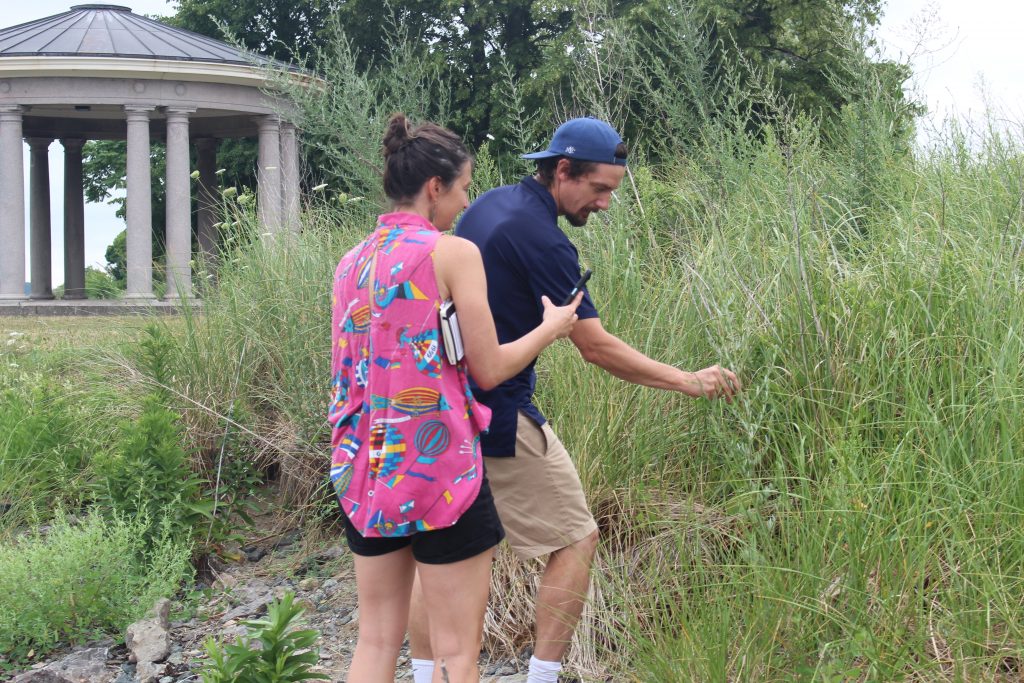
At the end of the site visit, we were joined by Cathy Baker-Eclipse and Simenesh Semine from the City of Boston, who discussed some of the ways in which Boston is both mitigating and adapting to the impacts of climate change.
When we returned to the Commandant’s House for the afternoon, the teachers finished their capstone posters and presented their lesson plans to their peers in a Gallery Walk. After presenting, the teachers also had an opportunity to peruse the posters at their own pace and provide written feedback. We left for the day feeling strong about the directions of our projects and ready to move into the final stage of development!
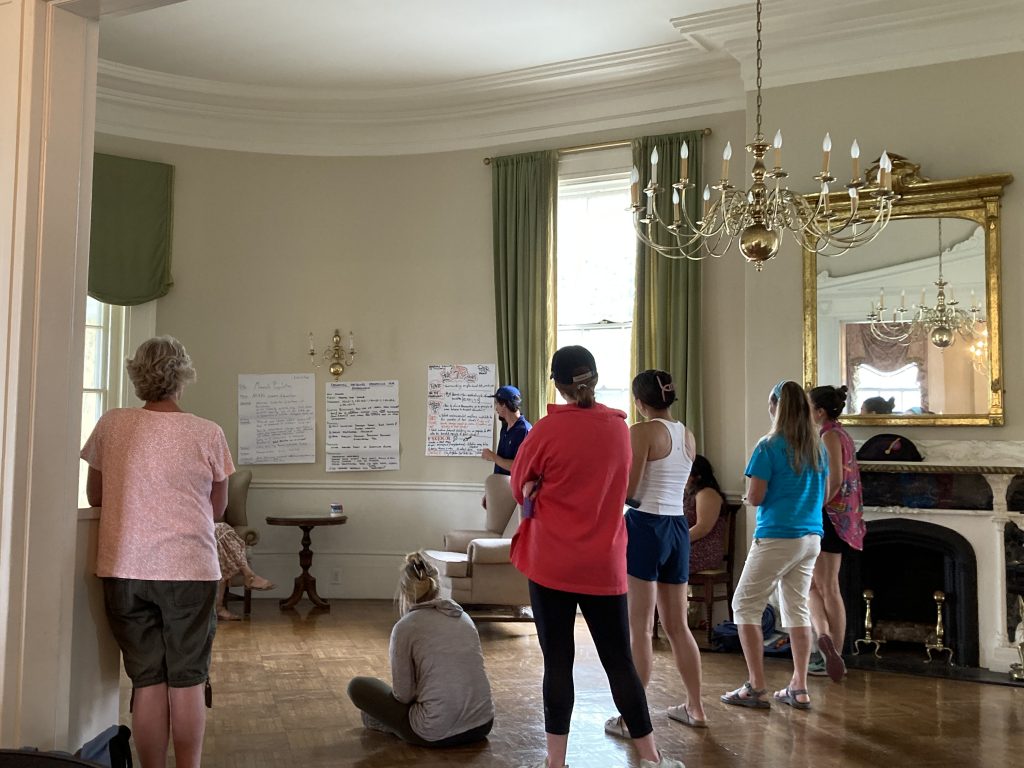
On a beautiful Friday morning, we met our teachers for the final day of the Institute in the Leventhal Room at the Boston Harbor Hotel. NPS ranger Elisabeth Colby guided us into the day with a journaling activity, where we listened to a chapter from Dr. Robin Wall Kimmerer’s Braiding Sweetgrass. We then made our way to Long Wharf, where we boarded for a trip to Spectacle Island!
After a rejuvenating cruise and picnic lunch along the water, we started our official tour of the island. We considered the long and winding history of Spectacle, as an island shaped by glaciers and used for various purposes by humans over time, some of which led to severe environmental degradation across the Harbor. After significant remediation efforts in the 1980s and 1990s, Spectacle Island’s ecosystem health has been restored. Today, as part of the Boston Harbor Islands National and State Park, Spectacle Island offers publicly accessible marinas, beaches, and hiking trails for visitors to enjoy.
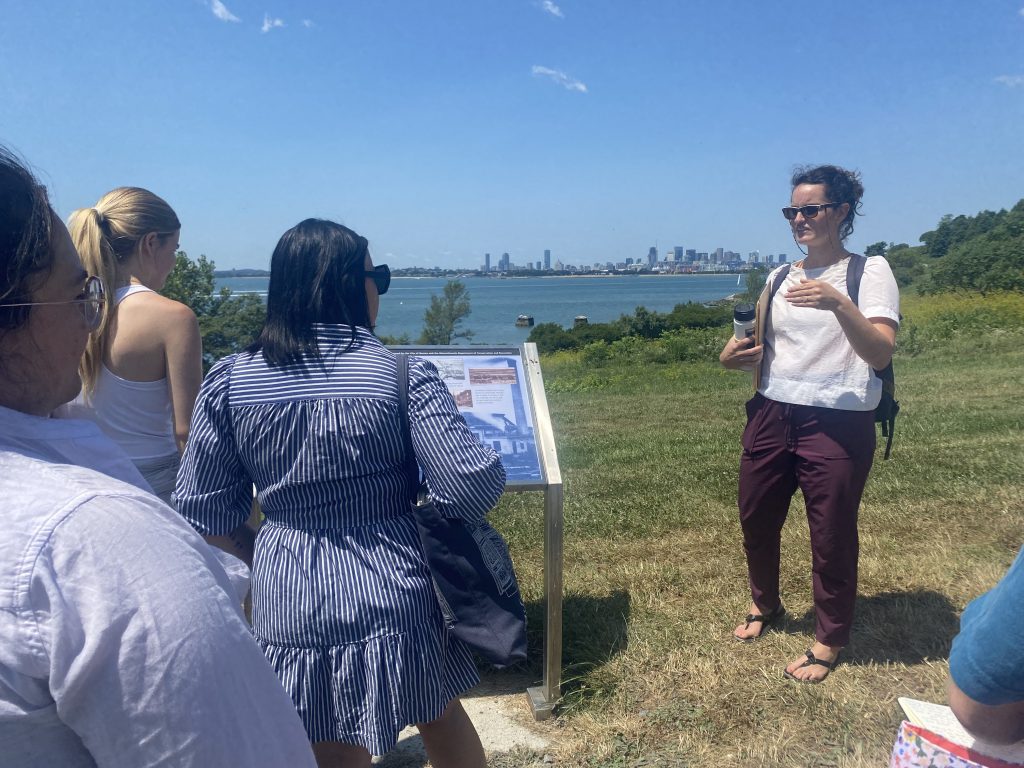
To close out our last afternoon together, we took some time to enjoy the many opportunities to engage with our natural world that are provided on the island, from swimming on the beach to investigating old artifacts from previous island inhabitants.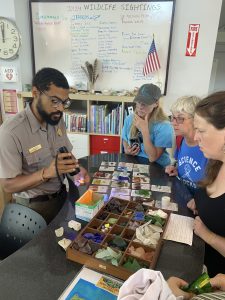
The teachers are now hard at work developing their capstone lesson plans, which will be presented to partners and collaborators at the end of August. We cannot wait to see how they applied what they learned throughout the week!
* Participatory science has historically been referred to as “citizen science”. However, members of the broader scientific community have been shifting away from the use of the term “citizen,” as may prove a barrier to engagement. For more information, visit the Association for Advancing Participatory Sciences